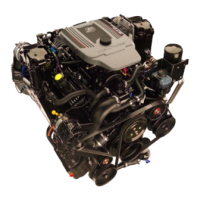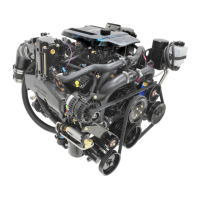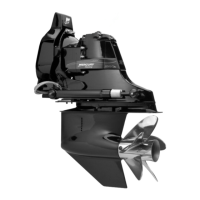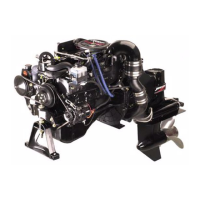Section 3 - On The Water
Page 46 90-864197070 JUNE 2007
IMPORTANT: The most important thing you can do to help reduce injury or impact damage
from striking a floating or underwater object is control the boat speed. Under these
conditions, boat speed should be kept to a maximum speed of
24 to 40 km/h (15 to 25 MPH).
Striking a floating/underwater object may result in an infinite number of situations. Some
of these situations could result in the following:
• The boat could move suddenly in a new direction. Such a sharp change in direction or
turn can cause occupants to be thrown out of their seats or out of the boat.
• A rapid reduction in speed. This will cause occupants to be thrown forward, even out
of the boat.
• Impact damage to the underwater drive components, rudder and/or boat.
Keep in mind, one of the most important things you can do to help reduce injury or impact
damage in these situations is control the boat speed. Boat speed should be kept to a
minimum planing speed when driving in waters known to have underwater obstacles.
After striking a submerged object, stop the engine as soon as possible and inspect the
drive system for any broken or loose parts. If damage is present or suspected, the power
package should be taken to an authorized Mercury MerCruiser dealer for a thorough
inspection and necessary repair.
The boat should be checked for hull fractures, transom fractures and water leaks.
Operating with damaged underwater drive components, rudder or boat bottom could cause
additional damage to other parts of the power package, or could affect control of the boat.
If continued operation is necessary, do so at greatly reduced speeds.
!
WARNING
Operating a boat or engine with impact damage can result in product damage, serious
injury, or death. If the vessel experiences any form of impact, have an authorized Mercury
Marine dealer inspect and repair the vessel or power package.
Conditions Affecting Operation
Weight Distribution (Passengers and Gear) Inside the Boat
Shifting weight to rear (stern):
• Generally increases speed and engine RPM
• Causes bow to bounce in choppy water
• Increases danger of following wave splashing into the boat when coming off plane
• At extremes, can cause the boat to porpoise
Shifting weight to front (bow):
• Improves ease of planing
• Improves rough water ride
• At extremes, can cause the boat to veer back and forth (bow steer)
Bottom Of Boat
To maintain maximum speed, the boat bottom should be:
• Clean, free of barnacles and marine growth
• Free of distortion; nearly flat where it contacts the water
• Straight and smooth, fore and aft
Marine vegetation may accumulate when the boat is docked. This growth must be removed
before operation; it may clog the water inlets and cause the engine to overheat.
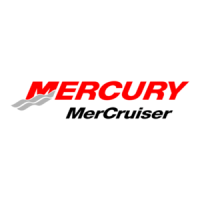
